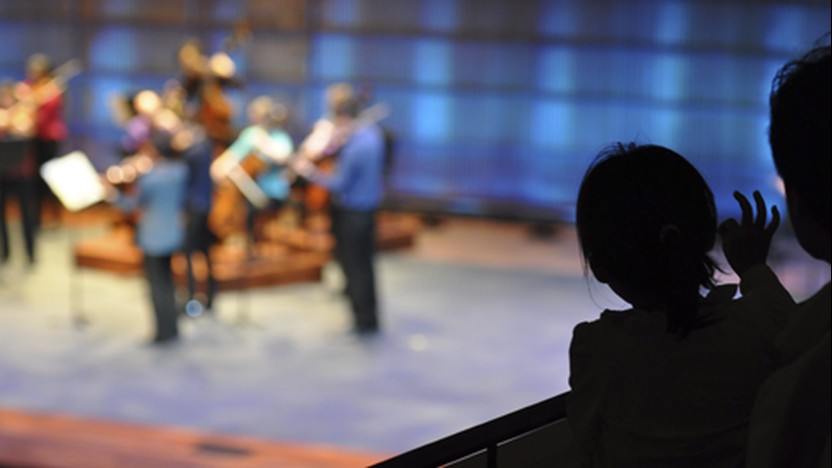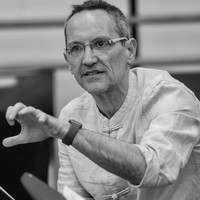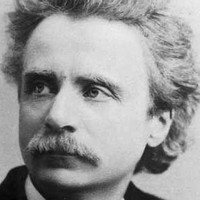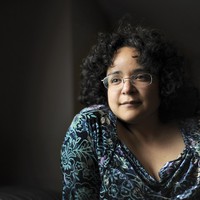Family Concert: My Journey, My Music

Sponsored By
- February 24, 2018


Sponsored By

 Watch Video
Watch Video
As a student at the Budapest Academy in his native Hungary, Bartok was educated in mainstream German and Austrian styles, and he graduated in 1903 writing music heavily influenced by Wagner and Strauss. The next year, while at a resort in what is now Slovakia, Bartok was so captivated by the singing he overheard from a Transylvanian-born maid that it launched him on one of the central pursuits of his life: to record and transcribe as many regional folksongs as he could find. Bartok became a pioneering scholar in the field of ethnomusicology, and over time he supervised the collection of some 14,000 distinct melodies, many of which he recorded himself using primitive wax cylinders.
In works like the Romanian Folk Dances from 1915, Bartok did not try to sanitize the authentic folk melodies by adding generic Western harmonies, nor did he pretend that his transcriptions for concert instruments would precisely recreate the nuanced inflections he captured on recording. Instead he developed a personal approach to these folksong arrangements that wrapped them in sparse and surprising accompaniments, blurring the line between composition and arrangement.
— © Aaron Grad
Aaron Grad ©2019



When Gabriela Lena Frank appeared on a list of “the top 35 female composers in classical music” compiled in 2017 by The Washington Post, chief critic Anne Midgette pointed to the significance of Frank’s “multiculturalism” and her practice of “mingling folk feeling with compositional sophistication.” Born in Berkeley to a mother of Peruvian-Chinese heritage and a father from a Lithuanian-Jewish background, Frank has embraced her ancestry, especially her connection to Peru, where she has traveled extensively. She wrote the following program note for Leyendas: An Andean Walkabout, a score she created for string quartet in 2001 and arranged for string orchestra in 2003.
Leyendas: An Andean Walkabout draws inspiration from the idea of mestizaje as envisioned by Peruvian writer José María Arguedas, where cultures can coexist without the subjugation of one by the other. As such, this piece mixes elements from the western classical and Andean folk music traditions.
Toyos depicts one of the most recognizable instruments of the Andes, the panpipe. One of the largest kinds is the breathy toyo which requires great stamina and lung power, and is often played in parallel fourths or fifths.
Tarqueda is a forceful and fast number featuring the tarka, a heavy wooden duct flute that is blown harshly in order to split the tone. Tarka ensembles typically also play in fourths and fifths.
Himno de Zampoñas features a particular type of panpipe ensemble that divides up melodies through a technique known as hocketing. The characteristic sound of the zampoña panpipe is that of a fundamental tone blown fatly so that overtones ring out on top, hence the unusual scoring of double stops in this movement.
Chasqui depicts a legendary figure from the Inca period, the chasqui runner, who sprinted great distances to deliver messages between towns separated from one another by the Andean peaks. The chasqui needed to travel light. Hence, I take artistic license to imagine his choice of instruments to be the charango, a high-pitched cousin of the guitar, and the lightweight bamboo quena flute, both of which are featured in this movement.
Canto de Velorio portrays another well-known Andean personality, a professional crying woman known as the llorona. Hired to render funeral rituals even sadder, the llorona is accompanied here by a second llorona and an additional chorus of mourning women (coro de mujeres). The chant Dies Irae is quoted as a reflection of the comfortable mix of Quechua Indian religious rites with those from Catholicism.
Coqueteos is a flirtatious love song sung by gallant men known as romanceros. As such, it is direct in its harmonic expression, bold, and festive. The romanceros sing in harmony with one another against a backdrop of guitars which I think of as a vendaval de guitarras (“storm of guitars”).
—Gabriela Lena Frank
Aaron Grad ©2022
Get driving directions and find nearby parking.
Find dining options close to the venue.
View seating charts to find out where you'll be seating.
SPCO concerts are made possible by audience contributions.
For exclusive discounts, behind-the-scenes info, and more:
Sign up for our email club!
